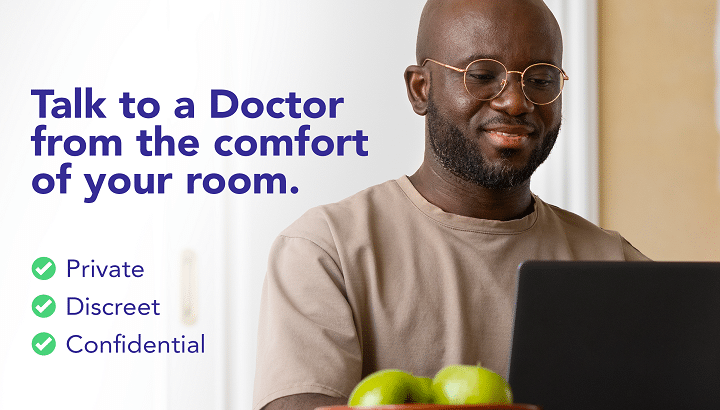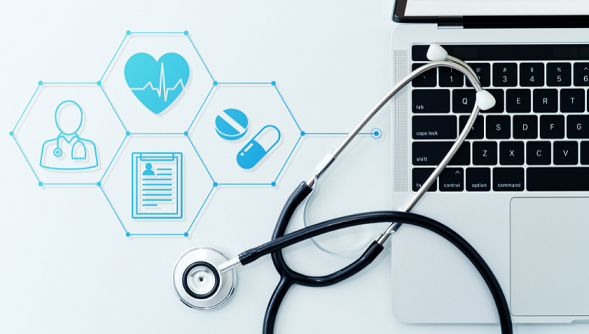
![]() Ginika Oluchi okekeTelehealthMarch 29, 2024
Ginika Oluchi okekeTelehealthMarch 29, 2024
It is not new for patients to talk to their primary care doctor via video or voice call and get medical advice, drug prescription or even a diagnosis. In most cases, there is an already established relationship or rapport between the said patient and the doctor.
However, the COVID-19 pandemic made online doctor consultation more popular than ever, with many patients and doctors having appointments remotely, using their phones or personal computers. This form of medical care delivery is called Telemedicine.
In this article, we explore how remote medical diagnosis works, addressing the big question: Can Telemedicine Diagnose? We discuss how accurate such diagnoses are, and the limitations it has.

Telemedicine diagnosis involves remotely diagnosing medical conditions without the need for an in-person visit to the doctor’s office. Imagine wearing your regular Pajamas at home while consulting with a licensed doctor via video call, getting a diagnosis, medical advice and drug prescription — all from the comfort of your home.
Most telemedicine diagnoses are very similar to traditional in-person diagnosis during physical doctor consultations. You will discuss your symptoms with the doctor, he/she will ask about your medical history and any relevant family history, and, in most cases, proffer a diagnosis during the call.
Some telemedicine platforms, like KompleteCare, also have chat features where patients can chat with their doctor during the call, upload their lab test results, photos, and so on.
Remote consultations or telemedicine diagnoses such as these, are most suitable for:

You can consult a doctor online when you need medical help or advice but do not want to physically visit the hospital. You can also opt for online doctor consultation, if your health issue is mild and not an emergency situation like ghastly home accidents, road accidents, heart attack or fire outbreak.
You can further consider seeing a doctor online for follow-up appointments (after you’ve already seen the doctor in-person) and for continuity of care. Lastly, you can consult a doctor remotely if the areas affected are easy to see and examine, such as your ears, skin, legs, hands, head, etc.
In any of these cases, telemedicine is good to go. Sign Up on KompeteCare for free to consult expert doctors online any time, any day, using just your smartphone.
| Skin infections and rashes. | Diabetes |
| Constipation or diarrhea. | Postpartum depression |
| Erectile dysfunctions. | Insomnia |
| Urinary tract infections. | Nausea and vomiting |
| Pain (back or neck pain, abdominal pain) | Pink eye |
| High blood pressure | Itchy Ears |
However, it’s important to note that telemedicine diagnosis is not a one-size-fits-all solution. While it offers convenience and accessibility, it also has its unique challenges, particularly concerning physical examination limitations compared to traditional face-to-face consultations.

Let’s confront the elephant in the virtual room: technology limitations. We’ve all experienced the frustration of internet hiccups and poor video quality, which can affect the diagnostic process.
For instance, imagine a scenario where a patient in a rural area experiences poor internet connectivity during a telemedicine consultation, leading to disruptions in communication and potentially compromising the accuracy of the diagnosis.
In addition, the absence of physical examination poses a significant challenge. While telemedicine doctors can rely on patient-reported symptoms and observations, certain conditions may require hands-on assessment for a conclusive diagnosis. Consider a patient presenting with a rash—a telemedicine consultation may provide visual cues, but tactile examination could offer crucial insights into the nature and severity of the condition.
According to Dr. Josh Emdur, a physician and medical director, “From my experience, telemedicine works best for very mild conditions and I guess that around 80% of patient complaints could be addressed with a video consult.”
Doctors using telemedicine to deliver care to patients are used to these challenges, and most of them have found better ways of navigating these issues by leveraging innovative technology.
For example, a dermatologist may use the high-resolution images captured by patients using smartphone cameras to assess skin conditions remotely. While it may not replicate an in-person examination entirely, it serves as a valuable tool in augmenting diagnostic accuracy.

From video and voice call consultations enabling remote interactions to using remote monitoring devices to track vital signs, telemedicine leverages modern technology to facilitate accurate diagnoses. Good case studies are patients with chronic conditions such as diabetes or hypertension. Telemedicine allows for real-time monitoring of blood glucose levels or blood pressure readings (using glucose level and blood pressure checkers. This empowers healthcare providers to intervene promptly in case of fluctuations or abnormalities, without the patients having to visit the hospital.
Let’s get even more real on the effectiveness of telemedicine diagnostics, and its potential to change the way we experience healthcare delivery. Take, for instance, the story of Sarah, a busy working mother juggling multiple responsibilities. When Sarah noticed concerning symptoms but struggled to find time for an in-person doctor’s visit, telemedicine offered a lifeline.
Through a virtual consultation, Sarah received timely medical advice, spoke extensively with the doctor discussing her symptoms, leading to an accurate diagnosis and prompt treatment, all without disrupting her hectic schedule.

Recent research findings highlight the impressive accuracy of telemedicine diagnoses, dispelling doubts surrounding its efficacy. These studies not only affirm the reliability of telemedicine but also underscore its cost-effectiveness and time-saving benefits for both patients and healthcare providers. A meta-analysis published in Mayo Clinic News Network analyzed data from over 97,000 online video consultations and concluded that telemedicine consultations yielded comparable diagnostic accuracy to traditional in-person visits across various medical specialties, ranging from primary care to dermatology.
Nevertheless, telemedicine isn’t exempt from challenges, necessitating ongoing refinement and adaptation. For example, a recent study identified internet connectivity issues as a significant barrier to telemedicine adoption in rural communities. Addressing such challenges requires collaborative efforts among policymakers, healthcare providers, and technology developers to ensure equitable access to telemedicine services.
Legal and Ethical Considerations in Telemedicine Diagnosis
Navigating the legal and ethical workings of telemedicine is crucial to ensuring responsible practice. Patient privacy laws, informed consent requirements, and data security protocols demand meticulous attention to uphold ethical standards. Despite these complexities, telemedicine remains committed to enhancing healthcare accessibility and convenience while adhering to legal and ethical principles.
Similarly, all physicians who participate in telemedicine must assure themselves that the telemedicine platform they are using has the appropriate protocols to prevent unauthorized access and to protect the security and integrity of patient information at the patient end of the electronic encounter, during transmission, and among all health care professionals and other personnel who participate in the telehealth/telemedicine service consistent with their individual roles.
Patient Perspectives and Satisfaction:
What do patients have to say about telemedicine? Spoiler alert: They’re singing its praises. Patient testimonials laud telemedicine for its time-saving benefits, convenience, and avoidance of crowded waiting rooms. As the ultimate stakeholders, patient satisfaction serves as a testament to telemedicine’s transformative impact on healthcare delivery.
In one of the largest studies to date of its kind, researchers found patient satisfaction ratings to be equivalent for video telemedicine consultations and in-person clinic visits. These findings highlight the potential for the use of telemedicine across a variety of patient populations.
Challenges and Opportunities for Telemedicine Diagnoses Improvement:
While telemedicine has made significant strides, challenges persist. Addressing disparities in internet connectivity, mitigating concerns regarding over-reliance on technology, and ensuring equitable access to care are among the hurdles that require concerted efforts. Yet, these challenges present opportunities for innovation and improvement, propelling telemedicine towards greater effectiveness and inclusivity.
On this note, we can say that the future of telemedicine diagnosis holds immense promise. Advancements in technology, coupled with increasing acceptance among patients and healthcare providers, are signs of a transformative era in healthcare delivery. From virtual reality consultations to AI-driven diagnostic algorithms, the possibilities are limitless, heralding a future where healthcare is more accessible, efficient, and patient-centric than ever before.
Conclusion
In conclusion, telemedicine diagnosis represents a paradigm shift in healthcare delivery, offering unparalleled convenience, accessibility, and efficiency. While it isn’t without its challenges, the potential for telemedicine to transform how we experience healthcare is undeniable. As we learn and adapt to the complexities of telemedicine, we are all building a future where telemedicine diagnoses not only can but do make a difference in the lives of millions worldwide.
Have you ever consulted a doctor online?
If you have any health concerns troubling you, Talk to a Doctor on KompleteCare from the comfort of your own home.
healthcareNovember 7, 2024
MedicationNovember 25, 2024
NutritionFebruary 5, 2025
MedicationFebruary 5, 2025








